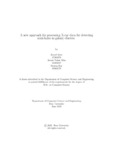| dc.contributor.advisor | Chakrabarty, Amitabha | |
| dc.contributor.advisor | Alam, Md. Golam Rabiul | |
| dc.contributor.author | Jafar, Zareef | |
| dc.contributor.author | Mim, Armin Nahar | |
| dc.contributor.author | Roy, Sworna | |
| dc.date.accessioned | 2021-09-08T09:52:49Z | |
| dc.date.available | 2021-09-08T09:52:49Z | |
| dc.date.copyright | 2021 | |
| dc.date.issued | 2021-06 | |
| dc.identifier.other | ID 17301178 | |
| dc.identifier.other | ID 16301067 | |
| dc.identifier.other | ID 19301279 | |
| dc.identifier.uri | http://hdl.handle.net/10361/14987 | |
| dc.description | This thesis is submitted in partial fulfillment of the requirements for the degree of Bachelor of Science in Computer Science and Engineering, 2021. | en_US |
| dc.description | Cataloged from PDF version of thesis. | |
| dc.description | Includes bibliographical references (pages 48-51). | |
| dc.description.abstract | Galaxy clusters, which may contain hundreds or thousands of galaxies, are the
biggest gravitationally bound objects in the universe. These clusters are filled with
heated X-ray emitting plasma. Radio mini-halos are radio sources which are found
in some cool-core non-major merging galaxy clusters and study of these mini halos
helped scientists to unveil many other mysteries of how the universe works. Till now
23 such galaxy clusters have been found, many with confirmed minihalo and some
with potential mini-halos. Even a few years ago observational data of this kind of
astronomical observations were available only to the astronomical communities and
specific research institutions. As more and more data is publicly available it made
a way for Amateur astronomers and students who want to work with real data. In
our work we use such publicly accessible X-ray data of these galaxy clusters from
Chandra X-ray Observatory for determining the cold front which ultimately will give
us the location of these mini halos. The main goal of our thesis is to develop a workflow using some open-source Astro data processing packages and including our own
python script for such purpose. These software tools include CIAO, ClusterPyXT
pipeline, conda and our own python script. This workflow includes setting up the
proper software environments, list of packages needed, rules for choosing different
input parameters for downloading as well as processing data successfully and some
sources to compare the generated output. From start to end this process can be
successfully run on any moderate modern desktop computer. | en_US |
| dc.description.statementofresponsibility | Zareef Jafar | |
| dc.description.statementofresponsibility | Armin Nahar Mim | |
| dc.description.statementofresponsibility | Sworna Roy | |
| dc.format.extent | 51 pages | |
| dc.language.iso | en | en_US |
| dc.publisher | Brac University | en_US |
| dc.rights | Brac University theses are protected by copyright. They may be viewed from this source for any purpose, but reproduction or distribution in any format is prohibited without written permission. | |
| dc.subject | Galaxy clusters | en_US |
| dc.subject | X-ray | en_US |
| dc.subject | Mini-halos | en_US |
| dc.subject | Cold Front | en_US |
| dc.subject | ClusterPyXT | en_US |
| dc.subject | CIAO | en_US |
| dc.subject | python | en_US |
| dc.subject.lcsh | Galaxies--Clusters | |
| dc.title | A new approach for processing X-ray data for detecting mini-halos in galaxy clusters | en_US |
| dc.type | Thesis | en_US |
| dc.contributor.department | Department of Computer Science and Engineering, Brac University | |
| dc.description.degree | B. Computer Science | |

